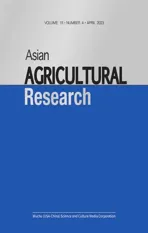Analysis of Visualization Mapping in the Field of Brand Community Based on CiteSpace III
2023-05-16GaixianCHAI
Gaixian CHAI
Hubei Business College, Wuhan 430079, China
Abstract Taking 887 relevant papers in the Web of Science database as the analysis object, and with the help of Citespace III software developed by Chen Chaomei’s team, this study makes a visual mapping analysis of the brand community field from the perspective of research hotspots, cooperation between countries (regions) and institutions, and co-citation networks. The study has found that research hotspots in this field focus on brand community, community, consumer, internet, model, loyalty, word-of-mouth, impact and trust. The United States has absolute strength in leading the research frontier of this field, and the degree of cooperation within the country is higher than that of international cooperation. The core papers in this field were published in from authoritative journals in the field of management. Through the analysis of the core papers, readers can further understand the development context of the brand community field.
Key words Brand community, CiteSpace III, Scientific knowledge map, Visualization
1 Introduction
Since the concept was proposed by Muniz and O’Guinn in 2001, the brand community has received wide attention from the academic circles. Brand community has become a frontier and hot topic in the current management research. Muniz and O’Guinn stated that a brand community is a special consumer group that is not restricted by region, and it is based on a series of social relationships formed by consumers who use the same brand[1]. Since then, some scholars have carried out further research on the connotation and function of brand community. For example, McAlexander pointed out that the brand community is a customer-centered central network[2]. Bagozzi and Dholakia stated that a brand community is a social group formed by customers who have a common passion for a brand, and they can accomplish a common goal or express mutual emotion and commitment through group behavior[3]. Albertetal.[4]held that a brand community is a collection of specialized consumer groups, and there are differences between it and traditional communities due to its commerciality and members’ interest, preference, and even fanatical love for the same brand. Some scholars analyzed the interrelationships among concepts such as consumer brand identity, brand community identity, brand community commitment, and brand loyalty within the brand community. In addition, some scholars thought that brand community is not only a group or group concept, but also a management tool for high-quality marketing, innovative management and the formation of good customer relationships. Whether it is now or in the future, research on brand communities means unprecedented opportunities to explore the social network environment[5].
In order to obtain a deeper understanding of the research status, research hotspots and development context in the field of brand community, with the aid of the Citespace III software based on Java applications developed by the team of Drexel University Chen Chaomei in the United States, we conducted an visual map analysis of the brand community field from the perspectives of research hotspots, cooperative relations between countries and institutions, and co-citation networks, in the hope of providing a certain reference for future research.
2 Research design
2.1 Research methodsUsing Citespace software to conduct a visual analysis of the brand community field, we analyzed the hot frontier issues of the brand community, the cooperative relationship between countries and institutions, and the co-citation network. CiteSpace software can not only present the cooperation network of countries, institutions, authors,etc., but also discover the knowledge base and frontier nodes of a certain research field through co-cited papers, and explore the characteristics of classic reference, subject knowledge structure and development and evolution trends through mining of frequently cited references.
2.2 Data acquisitionIn this study, all the data were selected from the Web of Science database, with "Brand Community" as the keyword, and "English" as the language, and 3 722 results related to "Brand Community" were obtained. Then, we refined the types of papers, and obtained 887 relevant papers. These 887 papers were exported in full-text format, including full records and cited references, and all downloaded brand community text files were named with "download" and ending with ".txt".
3 Results and analysis
3.1 Analysis of research hotspotsAfter importing the above text file into Citespace, we selected Keyword analysis to get the results as shown in Fig.1. There are 336 nodes and 700 lines in the map. The color and thickness of the "annual rings" in the map separately represent the time and quantity of the keywords. The darker the color, the longer the research time, and the larger the circle, the more frequently the keywords appear. Besides, we used the centrality to measure the role of key nodes in the evolution of the research frontier. Centrality is an important concept in social network analysis and it reflects the importance of an individual’s structural position. There are three types of centrality: degree centrality, closeness centrality, and betweenness centrality[6]. The centrality mentioned in this study is the betweenness centrality, which is the degree of control of a specific node over resources. The greater the centrality of a node, the more critical its role in the network map. Nodes with a centrality greater than 0.1 are considered key nodes, and are regarded as key hubs for the transition from one period to another. The key node information extracted from Citespace with a centrality greater than 0.1 is listed in Table 1. These key nodes are also keywords with high frequency, that is, research hotspots in this field[7]. In terms of the definition of brand community, it can be seen that a brand community is a cluster formed by consumers who identify with the same brand and is not limited to geographical regions. It is a complete social network entity. For consumers, the existence and significance of the brand community lies in providing consumers with various extraordinary consumption experiences related to the brand. Mc Alexanderetal.[2]pointed out that while community members share product experience and form brand preferences, it will exert a word-of-mouth effect on the brand. While the brand community enriches consumers’ brand experience, it will also stimulate consumers’ sense of community identity and belonging. Some consumers even associate positive or negative evaluations of brands from the outside world with their social dignity. Therefore, communities, consumers, internet, loyalty and word-of-mouth have become the objects of great concern of scholars. In addition, in the research on brand communities, researchers have proposed a lot of theoretical derivation models. For example, Mc Alexander proposed a theoretical model to explore the mechanism of brand community, brand relationship, brand satisfaction and customer experience on customer loyalty[8]. Bagozzi and Dholakia conducted an in-depth analysis of consumer participation and brand community using structural equation modeling from the perspective of social psychology[3]. Therefore, model exploration is also the focus of research in this field.
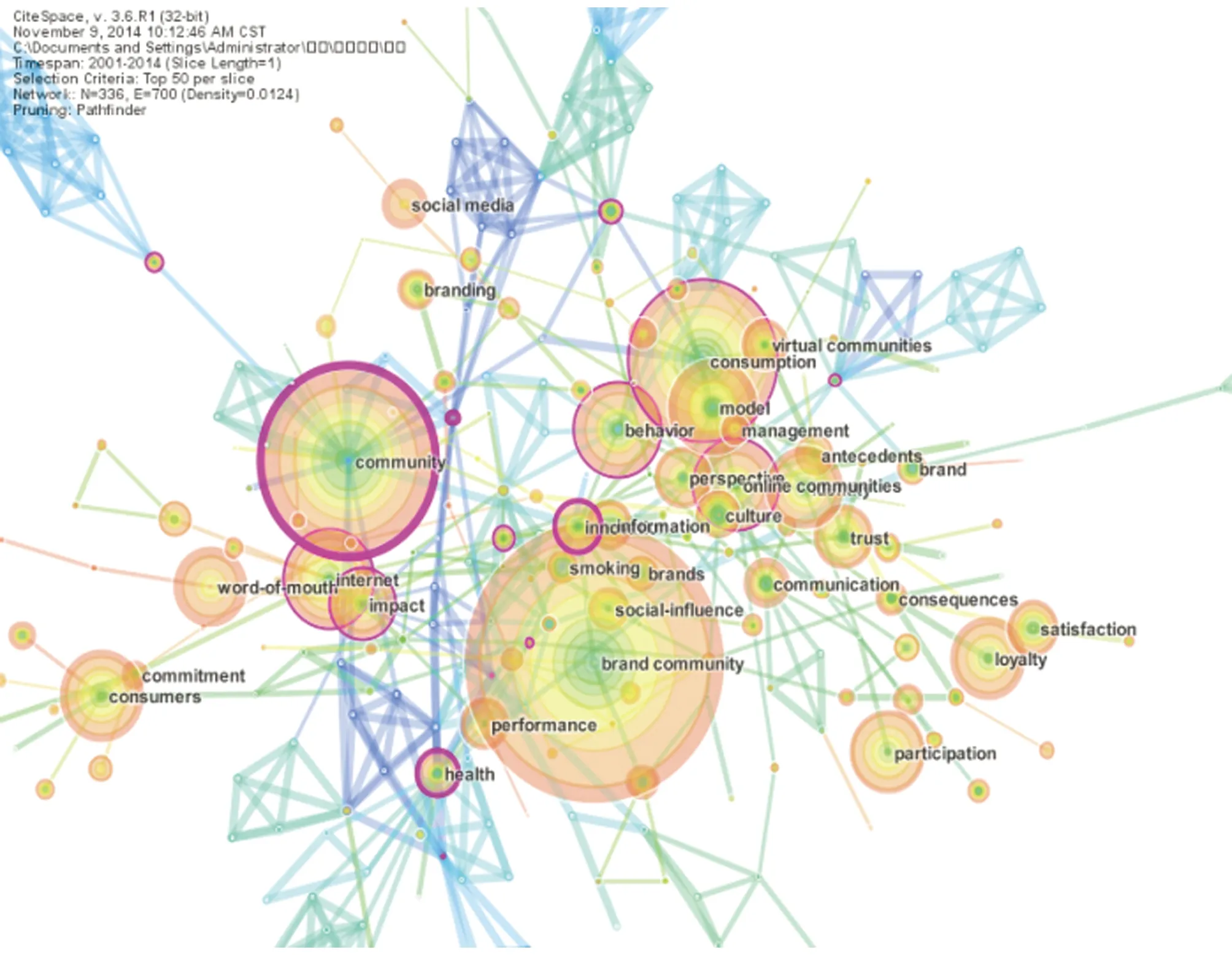
Fig.1 Keyword knowledge map
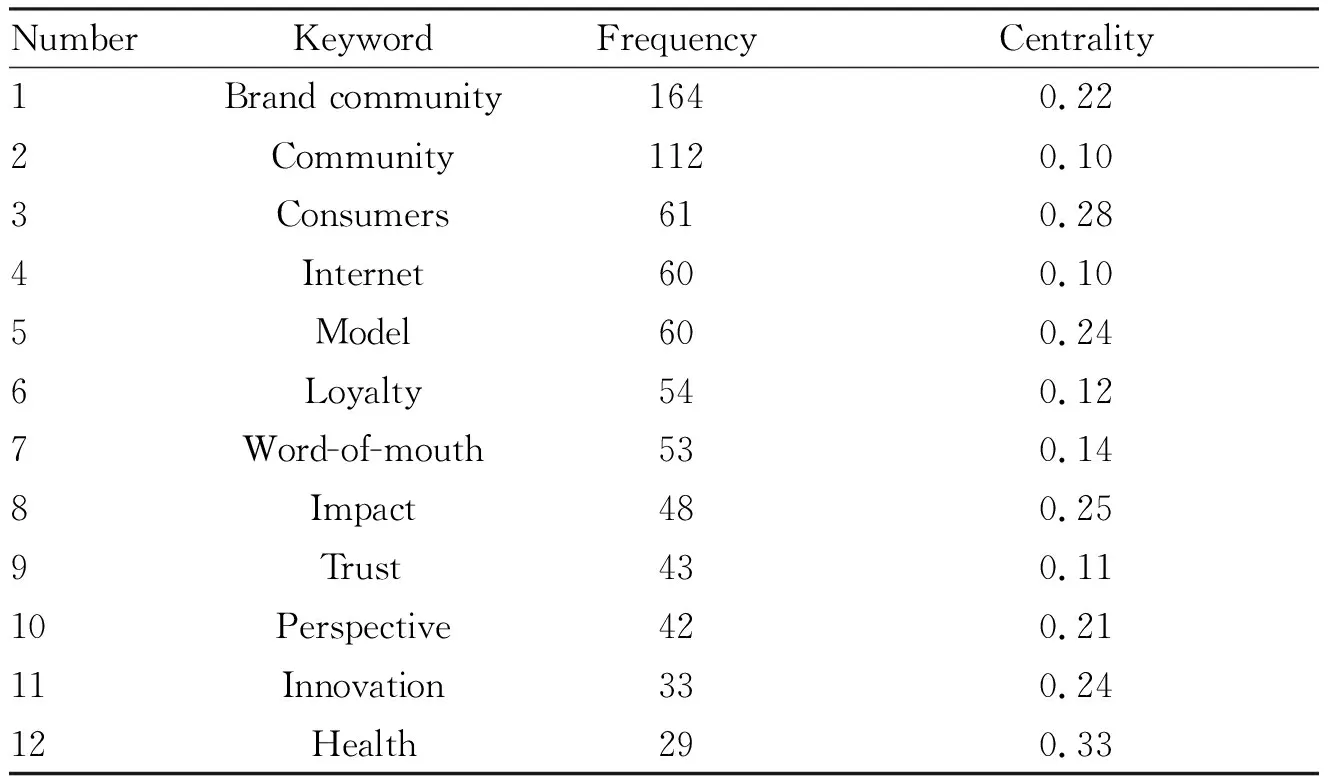
Table 1 High-frequency keywords in the research of brand community
3.2 Analysis of research strength of countries and institutional cooperation networkIn Citespace, we selected the node type as Country, and obtained Fig.2 after running. In Fig.2, the size of the nodes indicates the research level of each country in the field of brand community, the line indicates the mutual cooperation relationship between countries, and the thickness of the connection line represents the closeness of the cooperation relationship. From Fig.2, it can be seen that the United States took the lead in the research strength and occupies the core position, but the cooperation and exchanges with other countries were not frequent. In Fig.2, the second core was England, which had cooperation and exchanges with countries such as South Africa, Singapore and New Zealand. Although countries such as France, the Netherlands and Scotland were not as academically powerful and influential as the United States and England, they had more active cooperation with other countries.
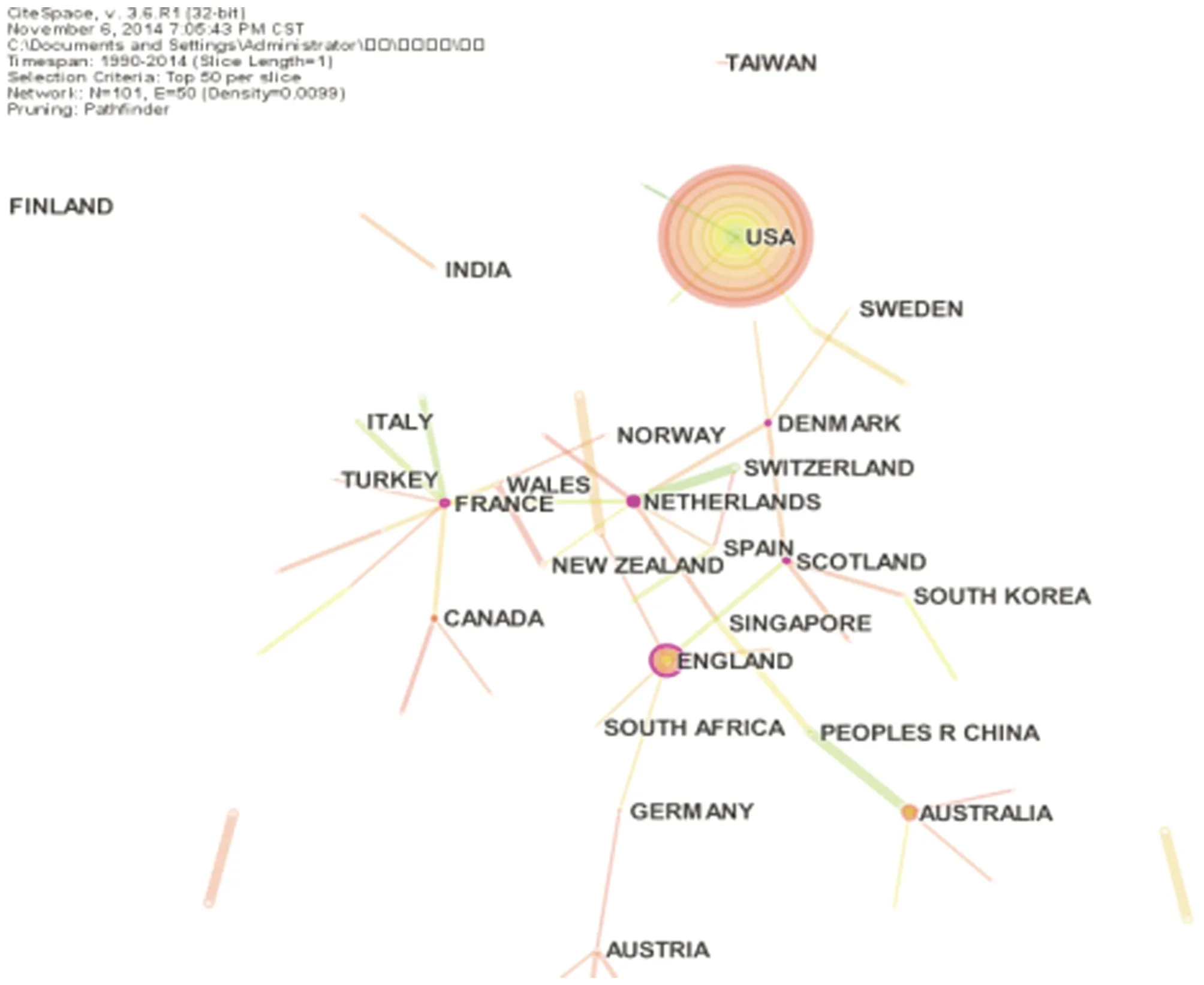
Fig.2 Visual map for cooperation network of countries (regions)
China’s research on brand communities is relatively late, and the output level is relatively low, and the research strength in this field is slightly inferior. However, with the transformation of marketing practice from traditional marketing mode to relationship marketing mode in recent years, it has become an issue that managers attach importance to by cultivating brand loyalty to maintain long-term relationships between customers and enterprises. As an important emotional and value bond, the brand community plays a prominent role in maintaining the relationship between customers and enterprises. In view of this, many Chinese scholars have started to pay attention to the impact of the existence of brand communities on brand loyalty, and studied the mechanism of action; some scholars are exploring the formation mechanism and functions of the virtual brand community; some scholars are doing related research on the brand connection power of the agricultural material brand community.
Taking the institution as the analysis object, we could obtain the map of the output institution shown in Fig.3 through clustering. The selected top 20 publishing research institutions and their number of publications are listed in Table 2. Among them, American universities accounted for 55% of all publishing institutions, and their overall cumulative number of papers published also ranked first. This distribution table also verifies the strong research strength of the United States in the field of brand communities revealed in Fig.2. Although the overall research level of the United States in this field was relatively high, in terms of the number of papers published by a single institution, the University of Innsbruck in Austria had the largest cumulative number of papers published. The number of published papers of the United Kingdom did not match its research strength, possibly because we only selected the top 20 publishing institutions in this field, and did not list all the publishing institutions one by one.

Table 2 Distribution of brand community research institutions
The cluster analysis of institutional cooperation network can also study the degree of agglomeration among institutions and the cooperation network between countries. As shown in Fig.3, in the field of brand community research, agglomeration was almost formed within each country, while there were relatively obvious blank areas between different clusters (countries), suggesting that exchanges between research institutions within countries were more extensive than cooperation between countries.
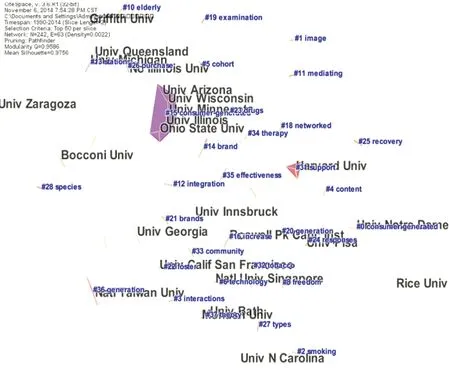
Fig.3 Visual map of institutional cooperation network
3.3 Co-citation network analysisCitation analysis is a method of using mathematics and logic to analyze the phenomenon and rules of citations of various analysis objects such as scientific journals, papers, monographs,etc., in order to reveal their quantitative characteristics and internal rules[9]. In the opinion of Zunde[10], citation analysis is mainly used for (i) conducting the qualitative and quantitative evaluation of authors, publications and scientific institutions; (ii) simulating the image of the historical development of science and technology; (iii) searching or retrieving information. In addition, Qiu Junping believed that the theory and method of citation analysis can measure the importance of disciplines, the sources of information of disciplines, the determination of core journals, the rules of scientific communication and information transmission,etc.Citation rate, impact factor, self-citing rate, self-citation rate, citation coupling and co-citation are all important citation measurement indicators in citation analysis[11]. Co-citation analysis, as an important content of citation analysis, is favored by scholars both at home and abroad. In 1973, Irina Marshakova, an information scientist in the former Soviet Union, and Henry Small, an American scientometrician, separately proposed the co-citation analysis of documents as a measure of the relationship between references[12]. Small took the lead in trying to use the SCI citation database to use knowledge graphs to study the structure of information science and its relationship with social science[13]. Qiu Junping pointed out that the analysis and research of various types of co-citation relationships in a broad sense is regarded as an important content of citation analysis[9]. Co-citation analysis includes reference co-citation analysis, author co-citation analysis, journal co-citation analysis and subject co-citation analysis,etc.
In Citespace, co-citation analysis includes author co-citation analysis, reference co-citation analysis and journal co-citation analysis. In Citespace, we selected the network node type as Cited Reference. After running and adjustment, we obtained Fig.4 through clustering. The Modularity in the upper left corner of Fig.4 represents the module of the network (Modularity=0.872 3). The larger the value, the better the clustering effect of the network. Mean Silhouette represents the average value of the similarity index within the cluster (Mean Silhouette=0.983 9). The closer the value is to 1, the higher the homogeneity within the network and the higher the overall clustering reliability[14]. From the high internal similarity of the clusters in Fig.4, it can be seen that each module of the cluster had high homogeneity. Therefore, the clustering quality was relatively ideal, and the eight main clustering types of clustering are listed in Table 3. The cluster information in Table 3 includes type or model (cluster ID), dimension (size), cluster internal similarity index (Silhouette) and cluster name (Name). The value of the dimension (size) indicates the number of members in this cluster. The references highlighted in the clustering diagram not only provide references for subsequent research, but also lay an important foundation for the development of the brand community research field.
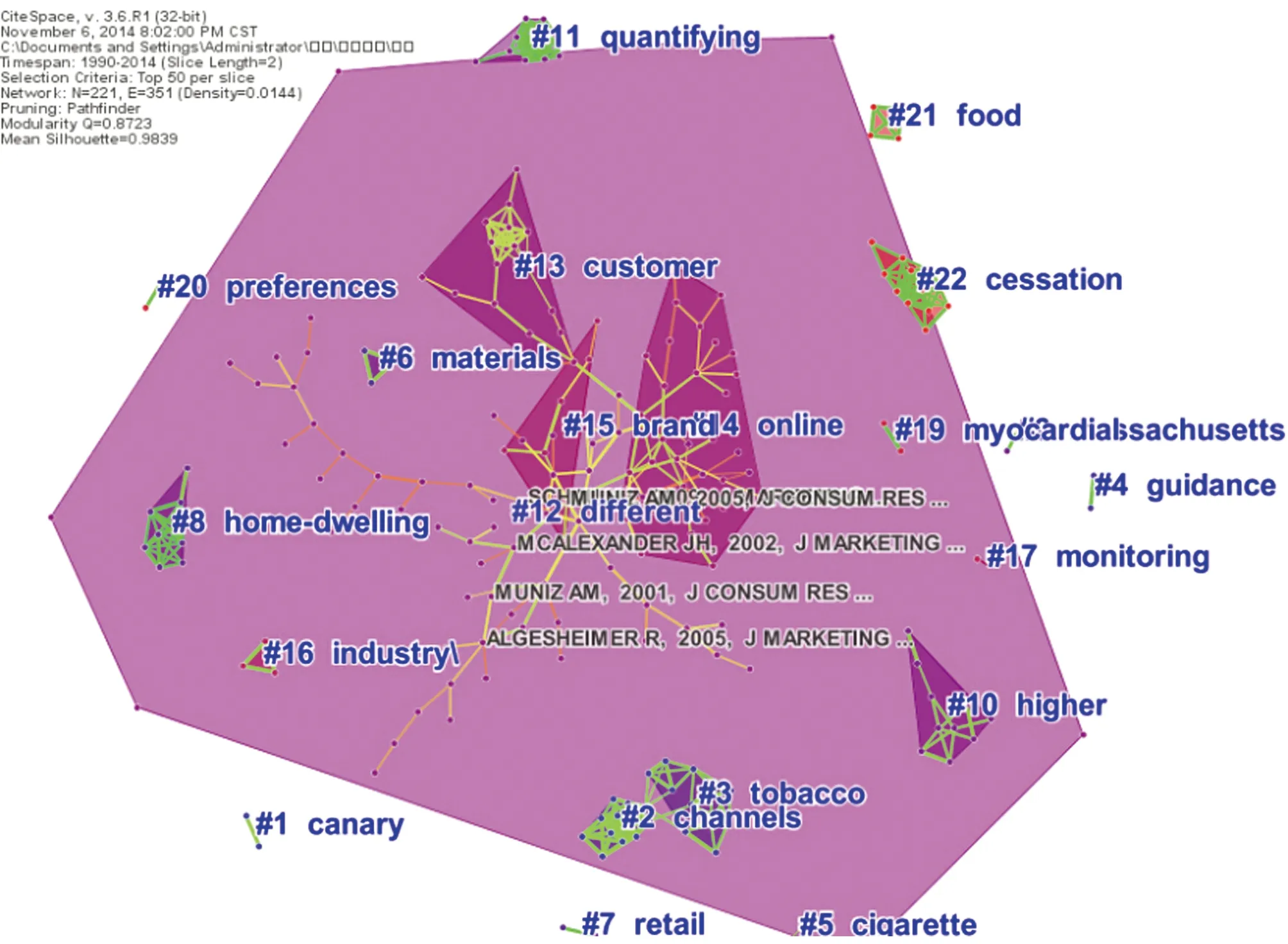
Fig.4 Reference co-citation analysis map

Table 3 Eight main clusters of brand communities
Tan Liwen and Ding Jingkun pointed out that the author’s frequently cited reference analysis is a metamorphosis based on the co-citation of references, to discover the interrelationships between different individuals, classify groups, and define key individuals at the center[7]. Therefore, according to the citation frequency of the references, we selected and sorted out the top 10 articles in Table 4. All frequently cited references in the table came from authoritative journals in the field of marketing management, which were highly representative of the discipline and academically frontier. For example, the citation frequency of Muniz’s "Brand Community" was up to 255 times. Muniz is the founder of the field of brand community, and his research is rooted in classical sociology, modern sociology and consumer behavior. He used ethnographic and computational media environment data to explore the characteristics, evolution and specificity of three brand communities (Ford Bronco, Macintosh, and Saab)[1]. According to McAlexander’s "Building Brand Community", the leader of the brand community is the consumer, which emphasizes the role of the core consumer. McAlexander also proposed a brand community integration model, and believed that brands should be included in the scope of brand communities[2]. Algesheimer developed a conceptual model in which the type of consumer-brand community relationship influences intentions and behavior of consumers. He analyzed positive impacts such as greater community participation brought about by brand community identity, and negative impacts such as pressure and resistance from community norms[15]. Schouten conducted a three-year field survey of Harley motorcycle users. Taking consumption subculture as the analysis scope, he made an in-depth analysis of the social structure, mainstream values and symbolic behaviors of this unique consumption-oriented subculture, which improves the refinement of this theoretical framework that places consumer subcultures in the context of modern consumer culture. Besides, Schouten discussed this symbiotic relationship between subcultures and marketing agencies[16]. Muniz conducted research based on the brand community of the "Newton" product abandoned by Apple, revealing the important attributes of the brand community at a deeper level[17]. Based on social behavior theory, Schau analyzed previously published articles and data from nine brand communities in various product categories and found that continuous consumer participation creates value for brand communities[18]. The structural equation model developed and applied by Fornell provides a model basis for subsequent research on brand communities[19]. Kozinets developed online communities as a new frontier for marketing research using the method of netnography and found that online communities are flexible and open[20]. Fournier pointed out that there is a correlation between brand personalization and brand loyalty[21]. Dhoiakia introduced the marketing concept of virtual communities based on networks and small groups to investigate and analyze a broad virtual community, and empirically tested the proposed social impact model of virtual community participation, and found that the type of virtual community adjusts the motives for consumers’ participation and the strength of consumers’ social identity[22]. All of the above frequently cited references focused on the direct research field of the brand community, and from this series of research changes, it can reflect the initial development and evolution of the brand community-related fields, namely, extending from the organizational definition and formation mechanism of offline brand communities to the characteristic dimensions and function models of online brand communities.

Table 4 Frequently cited articles and authors in the field of brand community
Specifically, related studies have initially put forward the concept of brand community from single research content such as consumer behavior and customer loyalty, and established a model of the formation mechanism of brand community. Besides, based on this, combined with the development of the new field of the existing network community, the value characteristic dimension of the virtual brand community was explored and the special role model was formed from the perspective of network integration. In addition, the existing research has also been extended to the study of virtual brand communities from the perspective of social networks, and the relevant content focuses on the centrality of social networks and the density of social network relationships.
In terms of category, the frequently cited references in this field belong to the categories of "different", "customer", "brand" and "online". From the perspective of clustering, it can intuitively show the stratification of the research fields of the brand community and has guiding significance for the classification research in the field of brand community. Through the research of Cited Journal, it is found that the highly cited journals wereJournalofConsumerResearch,JournalofMarketing,JournalofMarketingResearch,JournalofBusinessResearchandEuropeanJournalofMarketing, which are relatively well-known and authoritative journals in the world.
4 Conclusions and discussion
In the current highly competitive social environment, enterprises must retain regular customers while developing new customers in order to realize value creation. The loyalty of customers to a brand is very important to an enterprise, and an enterprise should also provide a good social environment for the development of the brand community, and then develop and cultivate a community collection that is quite loyal to its own enterprise. Enterprises can not only cultivate loyal customers through the community, but also fully consider the positive suggestions of community members, so that community members can feel a certain sense of corporate participation and create more material and cultural value for the enterprise. Therefore, the research content in the field of brand community is not single, but involves the social network relationship between enterprises and consumers, consumers and products and services, and between different consumers,etc.Thus, such keywords as high-frequency keywords as brand community, community, consumers, internet, model, loyalty, word-of-mouth, impact, and trust have become a hot research topic in the field of brand community and occupy an important position. Although high-frequency keywords are representative of the frontier research, those words with low frequency or low centrality are likely to become the hot spots and frontier directions of the development of emerging disciplines in the future. Future research work can be carried out on these low frequency words, so as to promote the rise of emerging disciplines to a certain extent.
In terms of the research level of various countries in this field, the United States has absolute strength and advantages, and its main research institutions are its institutions of higher learning. The research strength of the United Kingdom and Australia is not as good as that of the United States, but they are also leaders in this field. Although China’s research started relatively late, judging from the level of domestic economic development and the growth rate of brand building, its spatial field is also being further expanded from the traditional brand community concept, theoretical model and its formation mechanism to the fields of rural brand community and virtual brand community. Its potential for future development cannot be underestimated. The analysis map of cooperation between countries in this study indicates that the international cooperative research on brand communities is not ideal. Compared with international cooperation, domestic research cooperation is closer. In order to promote research cooperation between countries, the standardization and standardization of disciplinary knowledge will become a top priority in the development of the new era. From the visual analysis of the cooperation between institutional networks, we found that most of the cooperative institutions are universities, especially in the United States, the cooperation is basically the cooperation between universities. The cooperative relationship between universities, research institutions and enterprises is not close, which will not be conducive to the integrated development of industry-university-research institution.
Scholars tend to cite articles that promote their research progress and support their research theories. Through the reference co-citation analysis in the Citespace software, we searched the core references with important academic guidance significance. These important articles came from authoritative journals such asJournalofConsumerResearch,JournalofMarketingandInternationalJournalofResearchinMarketing. Such representative articles have very important reference significance for subsequent research in the field of brand community. Muniz is the first scholar proposing the concept of brand community. He pointed out the direction for the extension and development of brand community research, and is a pioneer in the field of brand community research. On the basis of Muniz’s research, McAlexander, Algesheimer, and Dhoiakia contributed greatly to the development of this field, which makes the research in this field a big step forward and promotes the extension and expansion of the research field. In this study, the co-citation analysis is only aimed at the field of foreign brand communities. In the future, it is expected to further compare and analyze the current status of domestic and foreign brand community research.
杂志排行
Asian Agricultural Research的其它文章
- Establishment of Molecular Biological Method for Identification of Bacteria by 16S rDNA and gyrB Gene
- Amplification and Bioinformatics Analysis of h-ns Gene of Vibrio alginolyticus
- Cloning and Bioinformatics Analysis of vscB Gene of T3SS Chaperone of Vibrio alginolyticus
- Effects of Continuous Cropping and Crop Rotation on Fungal Diversity in Greenhouse Soil
- Effects of Addition of Amino Acids or Soybean Phospholipid in Diet on Slaughter Performance and Meat Quality of Pigs
- Changes in Soil Organic Matter, Nitrogen and Phosphorus Contents during Decomposition of Pear Branches
